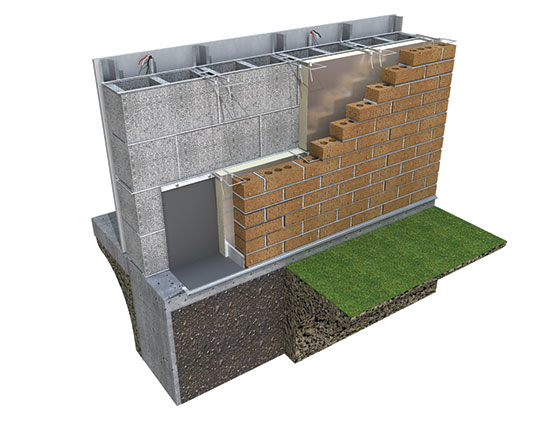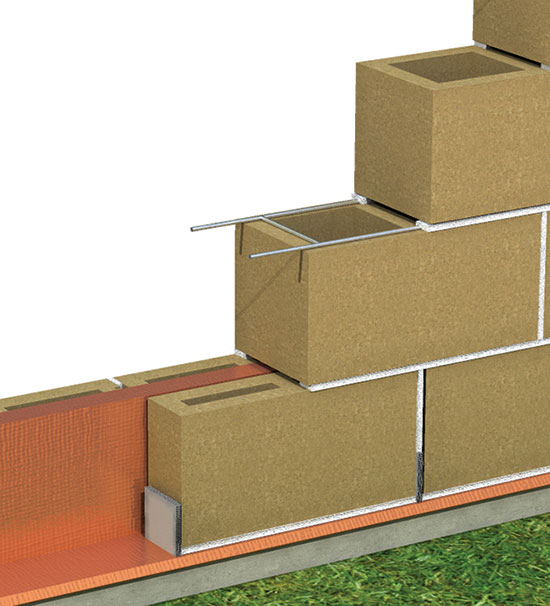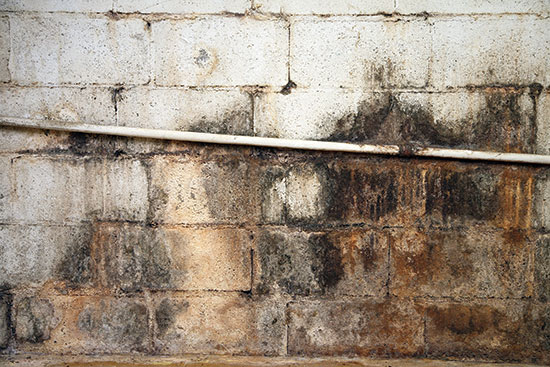Controlling Moisture in Masonry
Structural Problems
Moisture has been the number one cause of structural deterioration as long as there have been structures. Moisture in all its forms—snow and ice, wind-driven rain, and water vapor—greatly affect the performance of building materials. With unwanted moisture intrusion, masonry units and mortar can crack. When water enters brick, concrete, or natural stone, thermal expansion can cause the surface to peel, pop out, or flake off—a phenomenon commonly known as spalling, which is caused by excess moisture in the masonry that exerts pressure outward. Eventually, spalling can cause large sections of the masonry to crumble and fall off, potentially leading to structural damage.
Excessive moisture also results in wall rot, an extremely unsightly and unhealthy condition, as well as in disintegration of insulation and the staining of interior finishes. Other adverse impacts include deterioration and/or corrosion of the wood/steel backup studs, cladding, ties and reinforcements, which, left untreated, allow the water intrusion to increase and even spread, causing additional structural degradation or, in extreme cases, outright structural failure.
Aesthetic Degradation
High on the list of aesthetic impacts of too much moisture is efflorescence, a white, powdery, crystalline deposit on surfaces of masonry, stucco, or concrete. Essentially, efflorescence is the result of a salt within the masonry unit itself that has been dissolved by excess moisture and has migrated to the surface of a porous material, where it forms that unmistakable white bloom as the water evaporates. According to the Masonry Institute, three problems must exist in order for efflorescence to occur:
- There must be water-soluble salts present somewhere in the wall.
- There must be sufficient moisture in the wall to render the salts into a soluble solution.
- There must be a path for the soluble salts to migrate through to the surface where the moisture can evaporate, thus depositing the salts which then crystallize and cause efflorescence.
Even though sulfates may be present in a masonry wall, they must be dissolved by water in order to result in efflorescence. No moisture means no migration of sulfates to the surface. Certain conditions, however, will aggravate the potential for efflorescence. If the block has been exposed to cold, rainy weather during storage, for example, or to prolonged or heavy sprinkling, or if the structure has been poorly designed in terms of drainage and moisture control.
Health and Safety
According to the Department of Energy Building America Solutions Center, “Moisture is not often thought of in terms of occupant health and safety. Yet indoor air quality professionals consider moisture to be a ‘pollutant’ that can have a significant impact on the occupants’ health.” Excess moisture causes the growth of bacteria, which can generate new or worsening odors and harmful gases inside the building envelope. The effects can aggravate such conditions as asthma and allergies and, in some cases, result in cancer and birth defects. Airborne moisture is ripe for dust mites and roaches whose droppings exacerbate allergies and whose appearance necessitate the use of insecticides, which have their own deleterious effects. One of the most dangerous threats to human health and welfare from excess moisture in the building is mold. The subject of widespread media coverage and a surging number of cases across the country, mold can have severe consequences, and is extremely challenging to remove. Property insurance does not cover all mold damage, and insurance companies are scaling back on coverage and are not writing new policies in some states. Liability policies are now including mold exclusions. For further information on the growth and consequences of mold, see accompanying sidebar.

Photo courtesy of Oldcastle® Architectural

Photo courtesy of Oldcastle® Architectural










